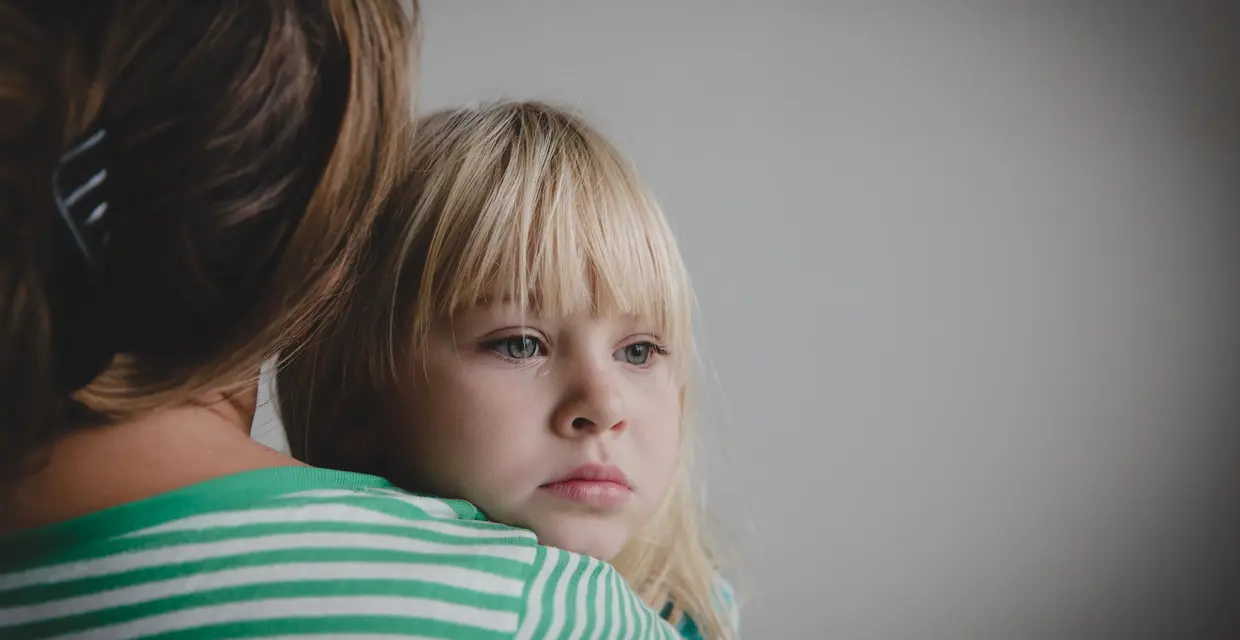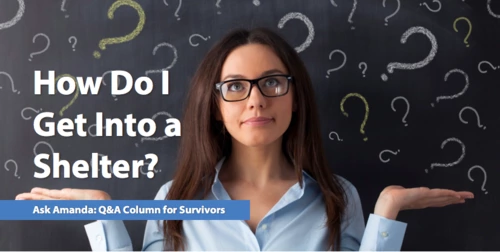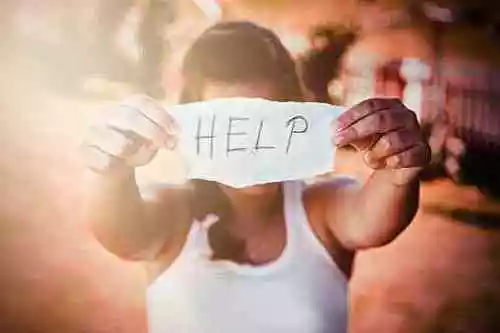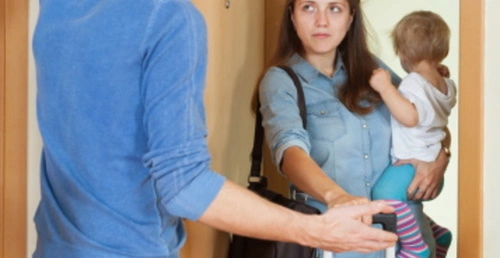1. Select a discrete app icon.

notes
'I Stayed at a Domestic Violence Shelter'
One survivor mom talks about the turmoil of deciding to escape with her three young children to an emergency shelter
- Apr 06, 2020

Tricia was 34 when she found refuge at a domestic violence shelter with her three children, ages 8, 9 and 10. Up until that day, she’d never considered shelter as an option—she didn’t know there were shelters specifically for women escaping abuse. She had assumed she’d need to go to a homeless shelter if she ever left him, and she wasn’t sure that was the safest place for her children to be.
Not that home was much safer. Her boyfriend wasn’t just physically intimidating—towering over her when he was mad, yelling in her face, poking her harshly in the chest to make his point. But he also shoved her, hit her and even strangled her, a tactic advocates warn is often a predictor that an abuser will become lethal.
Donate and change a life
Your support gives hope and help to victims of domestic violence every day.
He would yell at her kids too, scaring them. Tricia, who requests we use her first name only for safety, says that when she saw her youngest son cowering under his bed as her boyfriend yelled at the boy, something in Tricia broke.
“The first time [there was abuse], I made an excuse, like OK, I made him mad. You learn to defend yourself. You learn what you’re not supposed to do.” But Tricia says as her boyfriend’s abuse progressed and got more violent over the four years they were together, she found herself asking, “How did I get here? How did I let my kids get here?”
Tricia had wanted to leave before but her boyfriend always seemed to know. “Every time I would try to leave, my abuser would take the car keys or stay home from work to watch me.” He wouldn’t even let Tricia or her children use a public bathroom without standing outside the door to make sure they didn’t escape. They were, essentially, hostages. Tricia remembers following her boyfriend through the aisles of a local Wal-Mart while she cried, wishing she could run away.
“No one ever stopped to see what was wrong.”
Her boyfriend also made sure she knew that if she ever left him, he’d find her.
“He threatened my life, my brother’s life, my mom’s life, if I left.”
But that morning, Tricia said no more. No more yelling. No more threats. No more children hiding under beds. She waited until her boyfriend left for work, and then she waited some more, afraid he somehow sensed what she was up to and would walk back in the door.
He didn’t, so Tricia called the police and asked them to help her leave, in case he returned. She retrieved a bag she’d smartly packed and hid some time before, full of important paperwork like birth certificates and vaccination records. The police took her and her son to the station where they photographed the bruises that covered her body and went to school to get her other two children. Tricia recalls looking over her shoulder a thousand times, fearing her abusive boyfriend had followed them.
“You always wonder if he sees you and you don’t see him.”
The police found room in a shelter for Tricia and her kids in their Colorado community. It was the first time, Tricia says, she realized there were shelters specifically to help survivors. At the shelter’s main office, Tricia filled out paperwork about the abuse and signed an agreement saying she wouldn’t disclose where they were about to be taken in order to keep all the survivors safe.
“The kids were nervous, I was nervous. But they made us feel OK. They made us feel safe,” says Tricia of the advocates who helped her.
The shelter itself was a large Victorian house, renovated to house about five women, many with children. Her youngest was crying when they walked in, her daughter was in shock.
“You could see it in her face,” says Tricia, who tried to explain why they had to stay at this new house with strangers. Her 10-year-old son told his mom, “I’m going to protect you when I’m older.”
Tricia says her children began to let their guards down when they saw all the security cameras set up in the shelter. Advocates explained there was not one part of the main house they couldn’t see. Cameras even went up the block to watch for approaching visitors.
Tricia says the other women at the shelter were welcoming, but quiet, each absorbed with her own trauma.
“At first, it’s like walking into a doctor’s waiting room,” remembers Tricia. “Deep down you know you’re in there for the same thing but you don’t know everyone’s story. It wasn’t until group that we had to break down and tell what’s going on.”
Through the groups, Tricia would find out some of the women were bouncing from shelter to shelter, trying to get further away from their abusive partner, one city at a time. She felt empowered by their strength to keep going.
Tricia received individual counseling and counseling as a family. Her kids went to their own counseling sessions as well. At night, all the survivors would cook one big meal in the kitchen and share it. Everyone was assigned chores.
The family shared one room upstairs in the home with two sets of bunk beds. Her daughter slept next to her. The two boys pulled their beds closer to their mom. Tricia couldn’t sleep the first night, too nervous about what she’d done, and what she needed to do the next day.
In the morning, the children stayed home from school. Tricia and the shelter staff decided it was too dangerous to let them go as Tricia’s boyfriend was undoubtedly trying to find them. While her children received counseling and played with the other kids at shelter, Tricia went to the courthouse and filed for an order of protection. Tricia remembers feeling exposed out in public, as though her boyfriend could be waiting behind any corner.
“I thought, I need to hurry up so I can get this done so I can be one step further away from him.”
Two days later, the police informed Tricia they arrested her boyfriend for domestic violence based on her accounts and the injuries they photographed. She and her children were safe to return home after three days in shelter. Her boyfriend ended up serving 120 days. She and her children moved out of their house and to a neighboring city. She never saw him again.
When asked if she ever felt proud that she’d found the courage to leave, and taken the bold step of entering a shelter with her children, Tricia says she didn’t.
“No, because deep down inside, I still feel guilty that I put them [her children] through that. I still have guilt today, even though my kids say they don’t [blame her].”
At 45, Tricia is now remarried, has an eight-year-old and a new job working for a domestic violence nonprofit. Her three other children are grown and have joined the military. She says the experience has hindered them all, but that at least, they made it out alive.
“For me, I don’t think it’s ever really over. I don’t think I can ever put it behind me.”
The shelter, she says, “meant a lot. I think he [the abuser] was on the verge ... I had this feeling that one day, he’s going to hurt [the kids]. We wouldn’t of had anywhere to go if we didn’t have that shelter.”
Her advice for other survivors thinking about leaving: “They should go. If it’s to the point where they’re thinking about leaving and can’t, the best thing for them is to go because there are shelters and they’ll be safe there.”
Shelter is often the best option for survivors needing to escape danger immediately, but not all shelters are the same. Read, “Ask Amanda: What Happens if Shelter is Worse Than Home?” for what to do if the shelter you go to doesn’t seem to be listening to survivors’ concerns.
Looking for someone to speak with? Enter your location to find phone numbers for domestic violence experts in your area.
Have a question about domestic violence? Type your question below to find answers.








